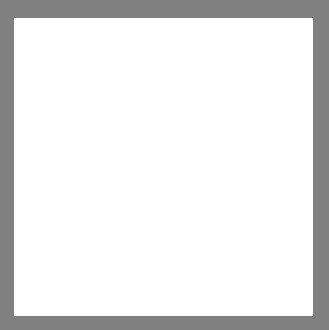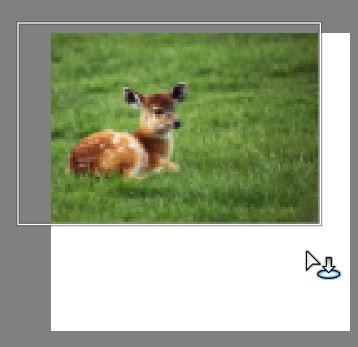-
Posts
3,560 -
Joined
-
Last visited
Posts posted by toltec
-
-
On 1/3/2019 Guest said:
You can call them ‘sardines’ and ‘rainbows’, it doesn’t matter. It’s about communication and ensuring everyone understands the language. NASA’s Mars Climate Orbiter failed because the wrong units were used - give a printing lab the wrong info and they don’t pick up the error you’ll crash and burn-up.
PPI refers to the pixel resolution of a digital image, DPI refers to the density of ink dots on paper. The nuances of the terminology can be discussed ad infinitum but the bottom line is this is the industry standard. To suggest the terms are ‘interchangeable’ is incorrect and lazy.
The developers should set a good example and use the correct terminology.
But why is Pixels Per Inch the correct terminology ?
Most of the world uses millimetres, all of Europe, China, Japan etc. They don't use the out-of-date imperial inches. Why should they be forced to ?
I would say that far more people use digital images for display on a screen or some sort, rather than for printing and certainly not for for printing using inches. Inches are irrelevant for screens.
Lines Per Inch or Dots Per Inch were being used in printing for hundreds of years before pixels existed. So who decided Pixels Per Inch was the standard and should take over the "per-inch" bit, which is unsuitable for measuring pixels.
I'm betting it was a printer in America

-
Make sure the ellipse is still selected, select the Artistic Text Tool and tap on the path of the ellipse, not inside. i.e. where the green starting triangle is showing below.

You can swipe upwards to set the size of the text.
-
1 hour ago, Ron Shutlar said:
Hello QA/Support
I my opinion the DPI reference needs to be removed and PPI inserted instead. I agree with some of the users of Affinity Photo, it has no place within the software package. The sooner it is removed the better. No other photo editing software that I have used contains DPI.
Regards
Ron
Why?
Pixels Per Inch is total nonsense for a screen measurement and there are no pixels on paper, only dots. So why use a measurement that is so totally incorrect?
All the other programs are wrong, why do something that is wrong just because everyone else does?
-
13 hours ago, Phillip Dove said:
On first use the programme worked well but when I want to show items from the pull down menus they don't all show in the side menu. Some show but most importantly the 'show character' does not, it doesn't work from either the Text menu or the View menu.
Try going View > Studio > Reset Studio.
That should put everything where you expect.
-
16 hours ago, R C-R said:
The Affinity Publisher beta is currently also mentioned on one of the Welcome screen panels in both Affinity Designer & Affinity Photo; & has been featured on the new https://affinityspotlight.com web site.
Not to mention information about the beta being plastered all over the www.serif.com or www.affinity.serif.com websites
 4 hours ago, Oval said:
4 hours ago, Oval said:They changed the launch some weeks ago without informing us here. :-( Right or wrong?
Wrong.
There has been talk about Publisher for years but no firm launch date. I’m sure someone will probably mention it when the time comes

-
If you go to the Affinity help files inside the app. Help menu > Help (or F1) and search for ‘keyboard shortcuts’ every single keyboard shortcut (dozens of them) is listed in there, arranged in the same order as the top menu bar.
There are no shortcuts to the ones you asked for (except Ctrl + M for Curves)
It is very easy to add your own though. Go to Edit > Preferences > Keyboard Shortcuts and the various Adjustments are in the Layers section of the second dropdown menu, as is shown in the screenshot posted by @R C-R
-
53 minutes ago, shazkol said:
I wonder if this is what I am getting too. I am new and use PS and just purchased AP.
I have created a 120x120px page for my web images. I then find the photo I want to use, open it in AP, copy it and paste on the page created.
How do I rescale the image to sit on the page using the 120px width. I want to move the image around so that I can work out my crop.
PS is a quick thing - create page, copy image, paste, rescale, flatten, save as jpg
Is this even possible in AP as this is one of the main uses for the next few months while I finish off a website.
Hoping there is an answer.
Sharon
I'm not sure why you are doing all this copying and pasting?
If you make a page (e.g. 120px x 120px)

Go File > Place and that will open the filer for you. Double click on an image...

Use the pointer to drag the image to about the right size on the page
You can then use any of the handles to resize it.

Because the image will be bigger than the physical page, that does crop it as you resize it. As you can see above from the bounding box, it is being cropped on both edges.
There is no need to Flatten it, if you just Export it as a JPEG (File > Export) and it will automatically be flattened.
You could use the same page more than once, just keep loading (placing) new images on top of the existing one, before exporting them.

They will be loaded as different layers and only the top one will be exported as a JPEG.

-
I think that technically, cropping has to be square but you can use a shape to clip an image.

Draw an ellipse shape then drag the image to the shape nesting (or clipping) position, which is at the bottom of the layer, but not completely below it. There will be a blue highlighter at the bottom of the layer when it’s in the right position.
If you want the background to be transparent, you will need to export the image as a PNG or a TIFF as JPEGs can not have a transparent background, so they will be white.
-
-
45 minutes ago, R C-R said:
Sorry, but to get your Official Affinity Fanboi Membership Card & the free Secret Decoder Ring, you must have at least four of these five Affinity apps installed on your desktop computer:
- Affinity Photo 1.6
- Affinity Designer 1.6
- Affinity Photo 1.7 customer beta
- Affinity Designer 1.7 customer beta
- Affinity Publisher 1.7 beta
To qualify for Elite status, you must also own the two iPad apps. (Owning an iPad that can run them is optional but recommended.)

I have Mac and Windows versions, Windows beta versions and both iPad apps.
What do I get ?
-
2 hours ago, VectorVonDoodle said:
Hi - when I go to draw a new vector object with the pen tool, it automatically defaults to a ‘none’ fill, even if I’ve been drawing a previous shape and filled that with a colour. Is there any way it can fill with the previously used colour (or any colour) as a default rather than no colour at all, meaning you have to fill each drawn shape individually? It’s very annoying, but maybe I’m just using it wrong. Appreciate any advice on this...
You can set any fill, line etc to be the default colours. Although you didn’t say which app you are using, it works the same for this.
Set them how you like, then go Defaults > Save (Document menu). Everything new will use those settings.
-
If you click on the fx button on the bottom of the Layers panel in the Studio.

there is a Bevel/Emboss effect in there.

-
Hi @Jim Radford
From the Document menu, go Export, then when the EXPORT panel appears, tap Share (bottom left hand corner) and then tap Save Image. That will save it into Photos, which most apps can access.
-
You would normally double-tap to create the very last node but, if you have already created it, double tap on the last node.
-
If it’s a Windows PC you can press the middle button down and pan. Not sure about a Mac
The spacebar temporarily selects the Hand Tool so you can drag to pan. Release the spacebar and the previous tool is selected.
-
Try Text Studio > Positioning > Baseline
-
1 hour ago, DiamondDave said:
any insight would be appreciated
Make sure you have New or Add selected and also check that the Feather is not set to something very high.

-
1 hour ago, Kaostream said:
In the screeengrab you posted, the Diamond layer is selected. If you paint on the diamond the strokes would show.
It is grey (selected) where all the other layer are black (not selected)
Actually, the strokes would not show on the diamond either as you are painting in the same colour.
-
1 hour ago, Kaostream said:
s there a bug or am I misssing something here.
You are trying to paint on the Diamond layer or Is that what you mean to do?
If you want to paint on the image layer, (Background) or a pixel layer, you need to select it.
-
11 hours ago, CarlosMtnez said:
Hello, I have a little question, I'm used to using Photoshop the "z" shortcut for zoom, I keep pressed the shortcut while I move the cursor left o right to zoom in or out, and when release the key it returns to my previous tool. It's very useful with a drawing tablet.
But in Affinity Designer, once I release the z key, it does not return to my previous tool, I have to press again the z to do that.
Is there any way to change this behavior? I prefer to use the "z" shortcut like pan tool (space key), like in Photoshop, Im working fast in this way.
Thanks
I prefer to press the spacebar (hold it down) then press Alt. You can then drag a marquee to zoom to. You must press the spacebar first.
Spacebar + Alt + click zooms out
-
35 minutes ago, michele said:
Hello,
I've tried several methods to accomplish this task.
I need to cut a small area (see red square in image) out of a larger document, then copy then create a new image from clipboard so I can recolor.
I have tried the following:
1. Creating a slice - this only allows you to export as a new file
2. Move Tool then Drag around object - won't accept (although AI allows you to click-drag to select all nodes )
3. Double - click - you have to keep trying to shift-click to select every object
4. Double-Click to select then select to the outer edge - doesn't select every item in the group
I'm out of guesses.. Is there an easier way?
If they are vector objects, in Preferences > Tools, tick this option, then drag a marquee around the object.

If it is a big bitmap, in the Pixel Persona, draw a selection marquee around it then press Ctrl + J, that duplicates it onto a new layer.
-
On 12/21/2018 at 10:53 AM, Leonardo Fiori said:
??
To view the mask as greyscale, in the Channels studio, tap the Composite Alpha thumbnail. Tap the 'return' arrow at the very top of the Channels studio to view all channels again. You can also select the mask layer and in the Layers studio, tap the Layer options button (ellipses in a circle) and then tap Solo.
If you want to edit the mask channel, you must select it !
To load to a selection, open the Channels studio, tap the ellipses for the Composite Alpha channel and then Load to Pixel Selection.
-
-
The 'Not' is actually Transparency. Click on that to turn the active colour transparent. Which you don't want to do!
You do not need to rasterise anything. You can mask Image layers without rasterising them first.
Paint on the Mask layer with black paint to reveal the image below, like my birds example below. Just select the paint brush tool and paint.

Paint with black on the flamingo's mask layer to reveal big bird below.

As @MEBsays, make sure the brush Opacity and Flow is 100% and make sure Protect Alpha (Context Toolbar) is not ticked.























Pixels per inch and not Dots per inch
in Pre-V2 Archive of Affinity on Desktop Questions (macOS and Windows)
Posted
If you are going to quote articles to try and prove your case, try and make sure they are technically correct, or at least explain things properly rather than glossing over them.
"Let’s start with some definitions. DPI stands for dots per inch and refers to the resolution of a printer. It describes the density of ink dots placed on a sheet of paper (or another photographic medium) by a printer to create a physical print."
That is a poor description.
Dots Per Inch refers to the the number of dots the printer can apply (the resolution), but when it comes to halftone images (which we are talking about) , they are made by varying the quantity of 'printer' dots. A typical imagesetter has a resolution of 2540 DPI (mine did) so the dots in a typical 150 LPI are made up of many smaller dots.